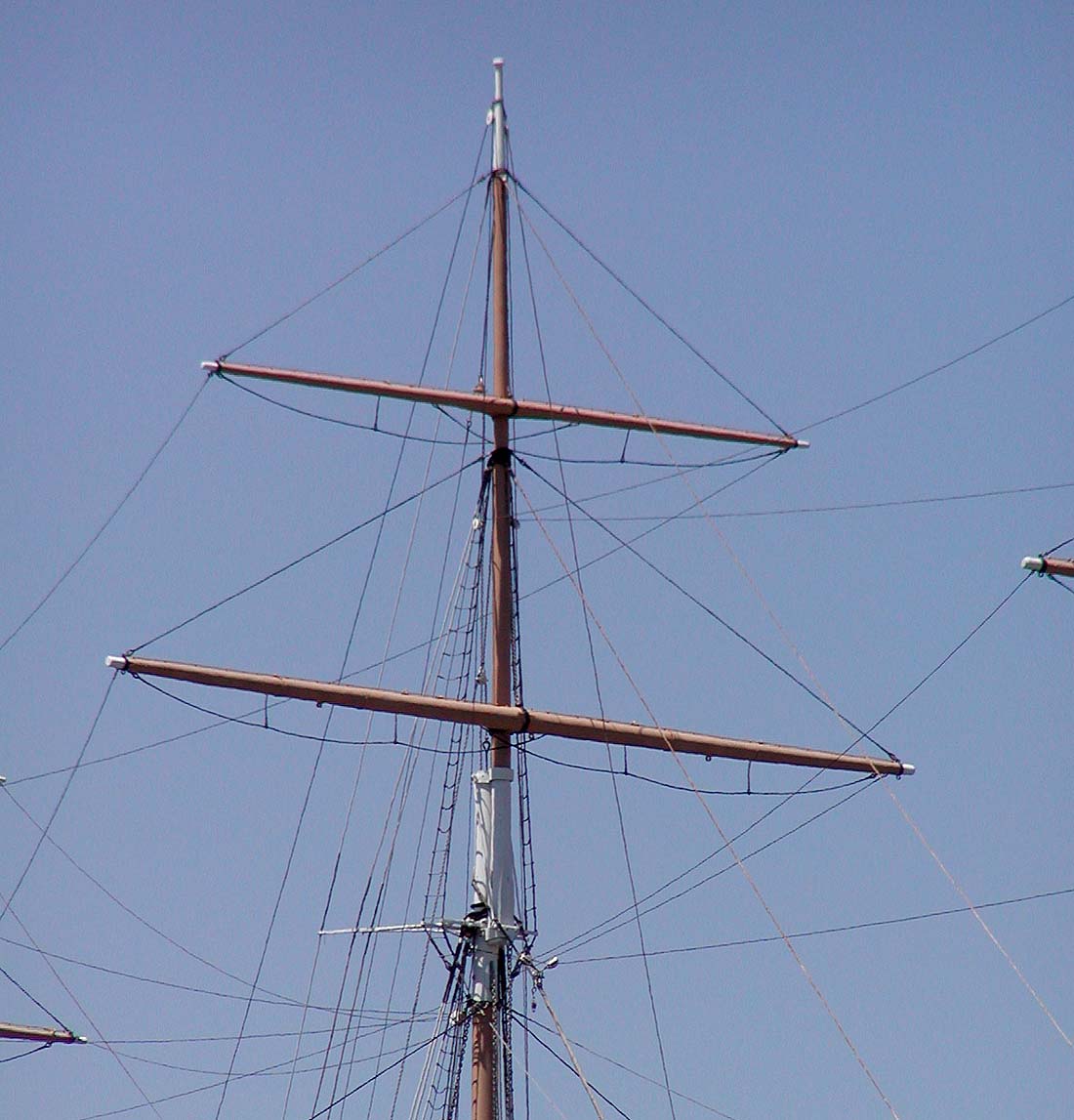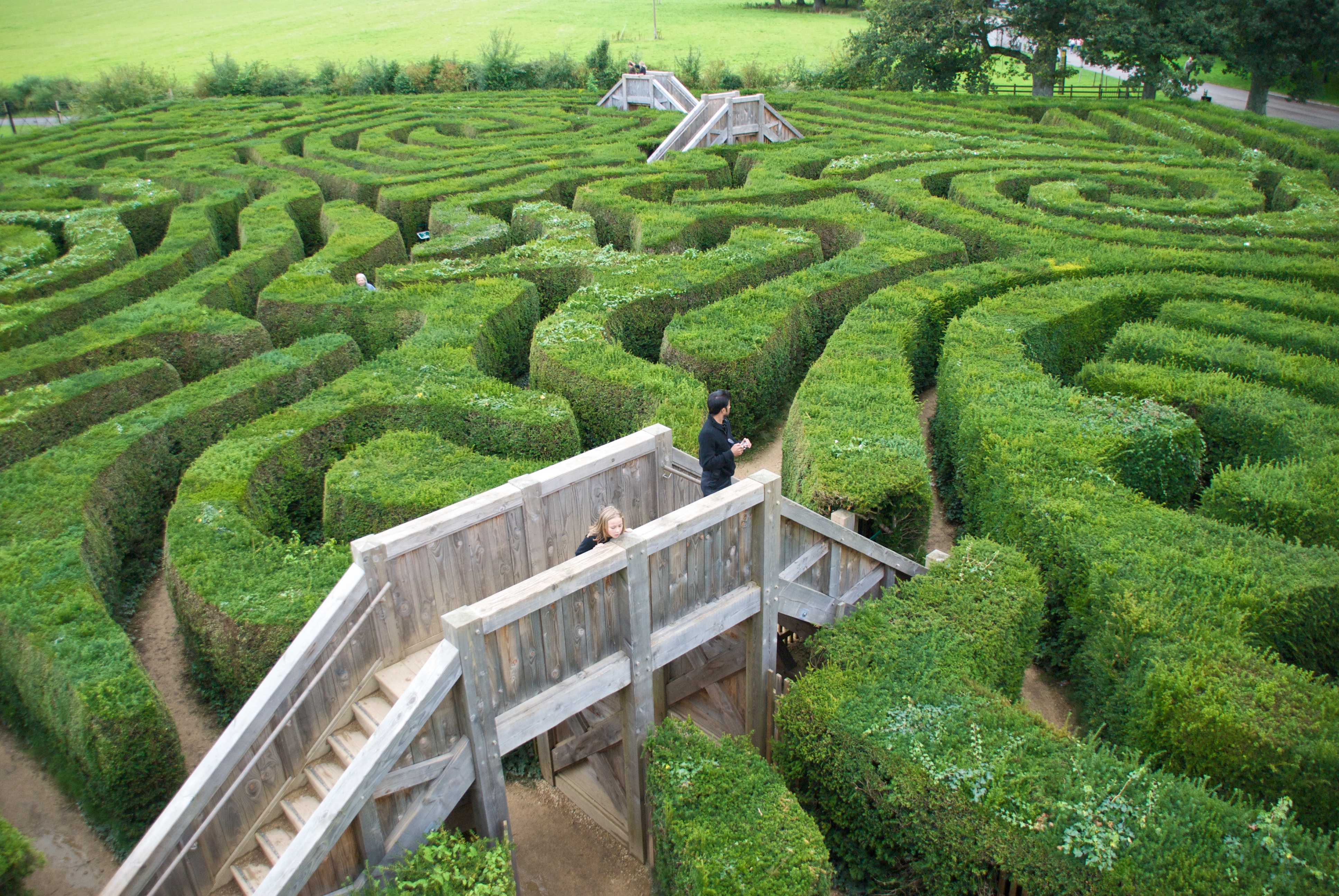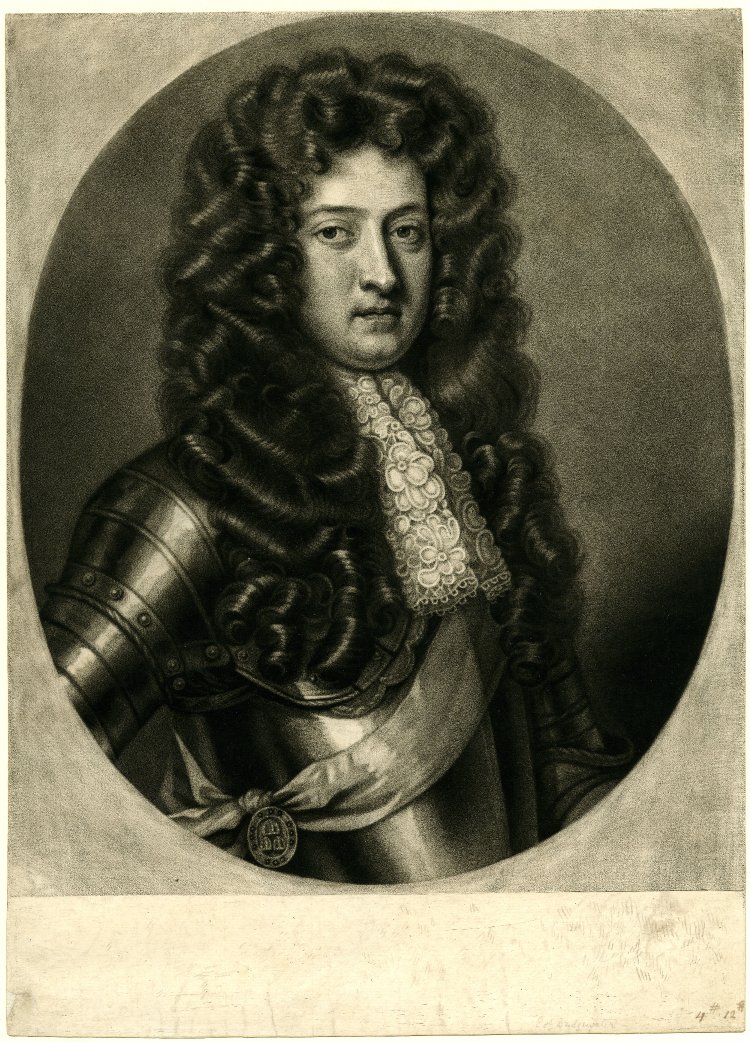|
Thomas Thynne, 1st Viscount Weymouth
Thomas Thynne, 1st Viscount Weymouth (1640 – 28 July 1714) was an English politician who served as president of the Board of Trade from 1702 to 1705. Biography He was born the son of Sir Henry Frederick Thynne of Caus Castle, Shropshire, and Kempsford, Gloucestershire, and his wife, Mary, daughter of Thomas Coventry, 1st Baron Coventry of Aylesborough. His sister was Katherine Lowther who was an electoral patron. He succeeded his father as 2nd baronet (1681) and married Frances, daughter of Heneage Finch, 3rd Earl of Winchilsea. He was descended from the first Sir John Thynne of Longleat House. He was educated at Kingston Grammar School and entered Christ Church, Oxford on 21 April 1657. He was invested as a Fellow of the Royal Society on 23 November 1664. He held the office of Envoy to Sweden between November 1666 and April 1669. He was returned as Member of Parliament (M.P.) for Oxford University between 1674 and 1679 and for Tamworth between 1679 and 1681. He s ... [...More Info...] [...Related Items...] OR: [Wikipedia] [Google] [Baidu] |
The Right Honourable
''The Right Honourable'' (abbreviation: The Rt Hon. or variations) is an honorific Style (form of address), style traditionally applied to certain persons and collective bodies in the United Kingdom, the former British Empire, and the Commonwealth of Nations. The term is predominantly used today as a style associated with the holding of certain senior public offices in the United Kingdom, Canada, New Zealand, and, to a lesser extent, Australia. ''Right'' in this context is an adverb meaning 'very' or 'fully'. Grammatically, ''The Right Honourable'' is an adjectival phrase which gives information about a person. As such, it is not considered correct to apply it in direct address, nor to use it on its own as a title in place of a name; but rather it is used in the Grammatical person, third person along with a name or noun to be modified. ''Right'' may be abbreviated to ''Rt'', and ''Honourable'' to ''Hon.'', or both. ''The'' is sometimes dropped in written abbreviated form, but is ... [...More Info...] [...Related Items...] OR: [Wikipedia] [Google] [Baidu] |
Tamworth (UK Parliament Constituency)
Tamworth is a List of United Kingdom Parliament constituencies, constituency represented in the House of Commons of the United Kingdom, House of Commons of the Parliament of the United Kingdom, UK Parliament, based on the town of Tamworth, Staffordshire, Tamworth in Staffordshire, England. The seat is currently represented by Sarah Edwards (British politician), Sarah Edwards of the Labour Party (UK), Labour Party, re-elected in the UK 2024 general election. Boundaries 1885–1918: The Municipal Borough of Birmingham, the Sessional Divisions of Birmingham and Solihull, part of the Sessional Divisions of Atherstone and Coleshill, and part of the Municipal Borough of Tamworth. 1918–1945: The Municipal Borough of Sutton Coldfield, the Rural Districts of Meriden and Solihull, and part of the Rural District of Tamworth. 1997–2010: The Borough of Tamworth, and the District of Lichfield wards of Bourne Vale, Fazeley, Little Aston, Mease Valley, Shenstone, Stonnall, and Tame. 2010 ... [...More Info...] [...Related Items...] OR: [Wikipedia] [Google] [Baidu] |
Maine
Maine ( ) is a U.S. state, state in the New England region of the United States, and the northeasternmost state in the Contiguous United States. It borders New Hampshire to the west, the Gulf of Maine to the southeast, and the Provinces and territories of Canada, Canadian provinces of New Brunswick and Quebec to the northeast and northwest, and shares a maritime border with Nova Scotia. Maine is the largest U.S. state, state in New England by total area, nearly larger than the combined area of the remaining five states. Of the List of states and territories of the United States, 50 U.S. states, it is the List of U.S. states and territories by area, 12th-smallest by area, the List of U.S. states and territories by population, 9th-least populous, the List of U.S. states by population density, 13th-least densely populated, and the most rural. Maine's List of capitals in the United States, capital is Augusta, Maine, Augusta, and List of municipalities in Maine, its most populous c ... [...More Info...] [...Related Items...] OR: [Wikipedia] [Google] [Baidu] |
George Weymouth
George Weymouth (c. 1585 – c. 1612) was an English explorer and colonist of the area now occupied by the state of Maine. George Weymouth was a native of Cockington, Devon, who spent his youth studying shipbuilding and mathematics. His travels are among the early recorded contacts between Wabanaki nations and people of Northern Europe. Voyages In 1602 Weymouth was hired to seek a northwest passage to India by the recently formed East India Company. He sailed the ship ''Discovery'' three hundred miles into Hudson Strait but turned back on July 26, as the year was far spent and many men were ill. Weymouth reached Dartmouth on September 5, 1602. 1605 expedition In March 1605, members of the English nobility, Thomas Arundell and Henry Wriothesley, sent Captain Weymouth to found a colony in "Virginia" (the location "Virginia" referring, at that time, to the lands of the entire eastern coastline of North America not ruled by France or Spain) under the ruse of searching again f ... [...More Info...] [...Related Items...] OR: [Wikipedia] [Google] [Baidu] |
Mast (sailing)
The mast of a sailing vessel is a tall spar, or arrangement of spars, erected more or less vertically on the median line of a ship or boat. Its purposes include carrying sails, spars, and derricks, giving necessary height to a navigation light, look-out position, signal yard, control position, radio aerial, or signal lamp. Large ships have several masts, with the size and configuration depending on the style of ship. Nearly all sailing masts are guyed. Until the mid-19th century, all vessels' masts were made of wood formed from a single or several pieces of timber which typically consisted of the trunk of a conifer tree. From the 16th century, vessels were often built of a size requiring masts taller and thicker than from single tree trunks. On these larger vessels, to achieve the required height, the masts were built from up to four sections (also called masts). From lowest to highest, these were called: lower, top, topgallant, and royal masts. Giving the lower section ... [...More Info...] [...Related Items...] OR: [Wikipedia] [Google] [Baidu] |
Longleat
Longleat is a stately home about west of Warminster in Wiltshire, England. A leading and early example of the Elizabethan prodigy house, it is a Grade I listed building and the seat of the Marquesses of Bath. Longleat is set in of parkland landscaped by Capability Brown, along with of let farmland and of woodland, which includes a Center Parcs holiday village. It was the first stately home to open to the public, and the Longleat estate has the first safari park outside Africa and other attractions including a hedge maze. The house was built by Sir John Thynne and designed mainly by Robert Smythson, after Longleat Priory was destroyed by fire in 1567. It took 12 years to complete and is widely regarded as one of the finest examples of Elizabethan architecture in Britain. It continues to be the seat of the Thynn family, who have held the title of Marquess of Bath since 1789; the eighth and present Marquess is Ceawlin Thynn. History Longleat was previously an ... [...More Info...] [...Related Items...] OR: [Wikipedia] [Google] [Baidu] |
Pinus Strobus
''Pinus strobus'', commonly called the eastern white pine, northern white pine, white pine, Weymouth pine (British), and soft pine is a large pine native to eastern North America. It occurs from Newfoundland (island), Newfoundland, Canada, west through the Great Lakes region to southeastern Manitoba and Minnesota, United States, and south along the Appalachian Mountains and upper Piedmont (United States), Piedmont to northernmost Georgia (U.S. state), Georgia and very rare in some of the higher elevations in northeastern Alabama. It is considered rare in Indiana. The Haudenosaunee maintain the tree as the central symbol of their multinational confederation, calling it the "Tree of Peace", where the Seneca use the name ''o’sóä’'' and the Mohawk people, Kanienʼkehá:ka call it ''onerahtase'ko:wa''. Within the Wabanaki Confederacy, the Mi'kmaq use the term ''guow'' to name the tree, both the Maliseet, Wolastoqewiyik and Passamaquoddy, Peskotomuhkatiyik call it ''kuw'' or ''ku ... [...More Info...] [...Related Items...] OR: [Wikipedia] [Google] [Baidu] |
First Lord Of Trade
The president of the Board of Trade is head of the Board of Trade. A committee of the His Majesty's Most Honourable Privy Council, Privy Council of the United Kingdom, it was first established as a temporary committee of inquiry in the 17th century that evolved gradually into a government department with diverse functions. The current holder of the post is Jonathan Reynolds, who is concurrently the Secretary of State for Business and Trade, secretary of state for business and trade. History The idea of a Board of Trade was first translated into action by Oliver Cromwell in 1655 when he appointed his son Richard Cromwell to head a body of Lords of the Privy Council of the United Kingdom, Privy Council, judges and merchants to consider measures to promote trade. Charles II of England, Charles II established a Council of Trade on 7 November 1660, followed by a Council of Foreign Plantations on 1 December that year. The two were united on 16 September 1672 as the Board of Trade and ... [...More Info...] [...Related Items...] OR: [Wikipedia] [Google] [Baidu] |
Glorious Revolution
The Glorious Revolution, also known as the Revolution of 1688, was the deposition of James II and VII, James II and VII in November 1688. He was replaced by his daughter Mary II, Mary II and her Dutch husband, William III of Orange (William III and II), a nephew of James who thereby had an interest to the throne irrespective of his marriage to his cousin Mary. The two ruled as joint monarchs of Kingdom of England, England, Kingdom of Scotland, Scotland, and Kingdom of Ireland, Ireland until Mary's death in 1694, when William became ruler in his own right. Jacobitism, the political movement that aimed to restore the exiled James or his descendants of the House of Stuart to the throne, persisted into the late 18th century. William's invasion was the last successful invasion of England. Despite his own Catholicism, usually an impediment to Protestant support, James became king in February 1685 with widespread backing from the Protestant majorities in England and Scotla ... [...More Info...] [...Related Items...] OR: [Wikipedia] [Google] [Baidu] |
James II Of England
James II and VII (14 October 1633 – 16 September 1701) was King of England and Monarchy of Ireland, Ireland as James II and King of Scotland as James VII from the death of his elder brother, Charles II of England, Charles II, on 6 February 1685, until he was deposed in the 1688 Glorious Revolution. The last Catholic monarch of Kingdom of England, England, Kingdom of Scotland, Scotland, and Kingdom of Ireland, Ireland, his reign is now remembered primarily for conflicts over religion. However, it also involved struggles over the principles of Absolute monarchy, absolutism and divine right of kings, with his deposition ending a century of political and civil strife by confirming the primacy of the English Parliament over the Crown. James was the second surviving son of Charles I of England and Henrietta Maria of France, and was created Duke of York at birth. He succeeded to the throne aged 51 with widespread support. The general public were reluctant to undermine the principle ... [...More Info...] [...Related Items...] OR: [Wikipedia] [Google] [Baidu] |
Thomas Herbert, 8th Earl Of Pembroke
Thomas Herbert, 8th Earl of Pembroke ( 165622 January 1733), styled The Honourable Thomas Herbert until 1683, was a British statesman who served as Lord Privy Seal from 1692 to 1699. Background Herbert was the third son of Philip Herbert, 5th Earl of Pembroke and his wife Catharine Villiers, daughter of Sir William Villiers, 1st Baronet who was the half-brother of the 1st Duke of Buckingham, George Villiers. Through his grandmother, Susan de Vere, he was a great-grandson of Edward de Vere, 17th Earl of Oxford, the Oxfordians' William Shakespeare. He was educated at Tonbridge School, Kent. Both of his brothers (the 6th Earl and the 7th Earl) having died without a male heir, he succeeded to the earldoms in 1683. Through them, he would inherit the family seat of the Earls of Pembroke, Wilton House in Wiltshire. Public life Herbert was returned unopposed as Member of Parliament for Wilton at the two general elections of 1679 and the general election of 1681. He was ... [...More Info...] [...Related Items...] OR: [Wikipedia] [Google] [Baidu] |
Henley-on-Thames
Henley-on-Thames ( ) is a town status in the United Kingdom, town and Civil parishes in England, civil parish on the River Thames, in the South Oxfordshire district, in Oxfordshire, England, northeast of Reading, Berkshire, Reading, west of Maidenhead, England, Maidenhead, southeast of Oxford and west of London (by road), near the tripoint of Oxfordshire, Berkshire and Buckinghamshire. The population at the 2021 United Kingdom census, 2021 census was 12,186. History Henley does not appear in Domesday Book of 1086; often it is mistaken for ''Henlei'' in the book which is in Surrey. There is archaeological evidence of people residing in Henley since the second century as part of the Romano-British period. The first record of Henley as a substantial settlement is from 1179, when it is recorded that Henry II of England, King Henry II "had bought land for the making of buildings". King John of England, John granted the manor of Benson, Oxfordshire, Benson and the town and manor o ... [...More Info...] [...Related Items...] OR: [Wikipedia] [Google] [Baidu] |










